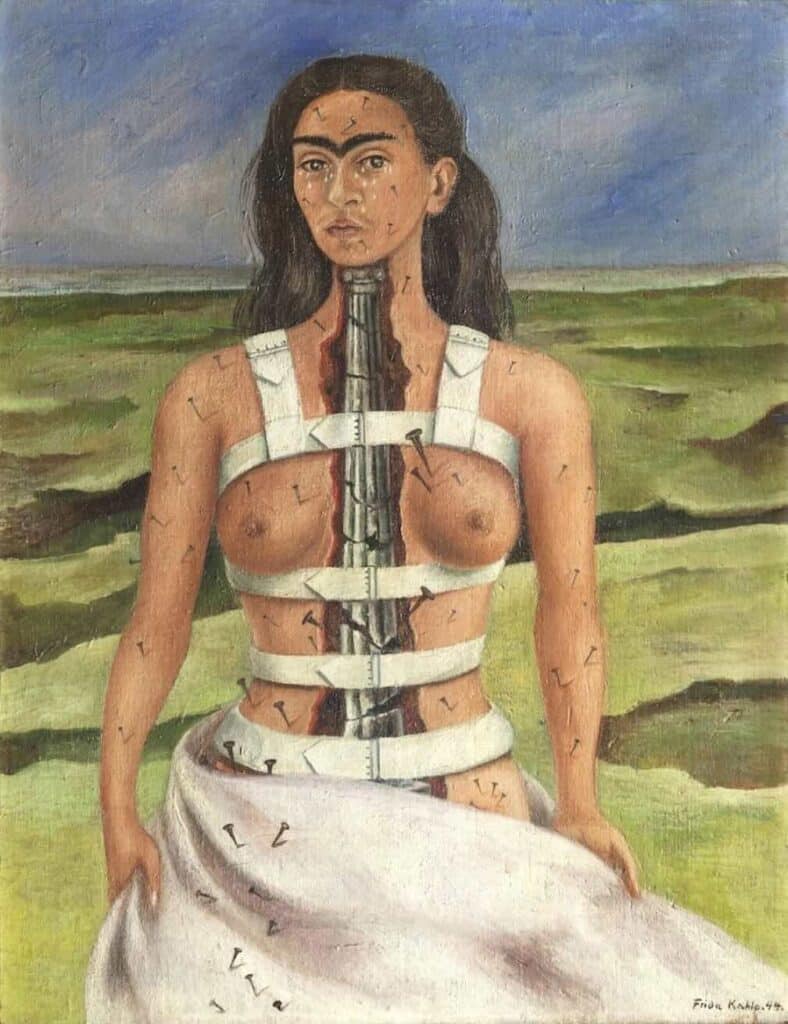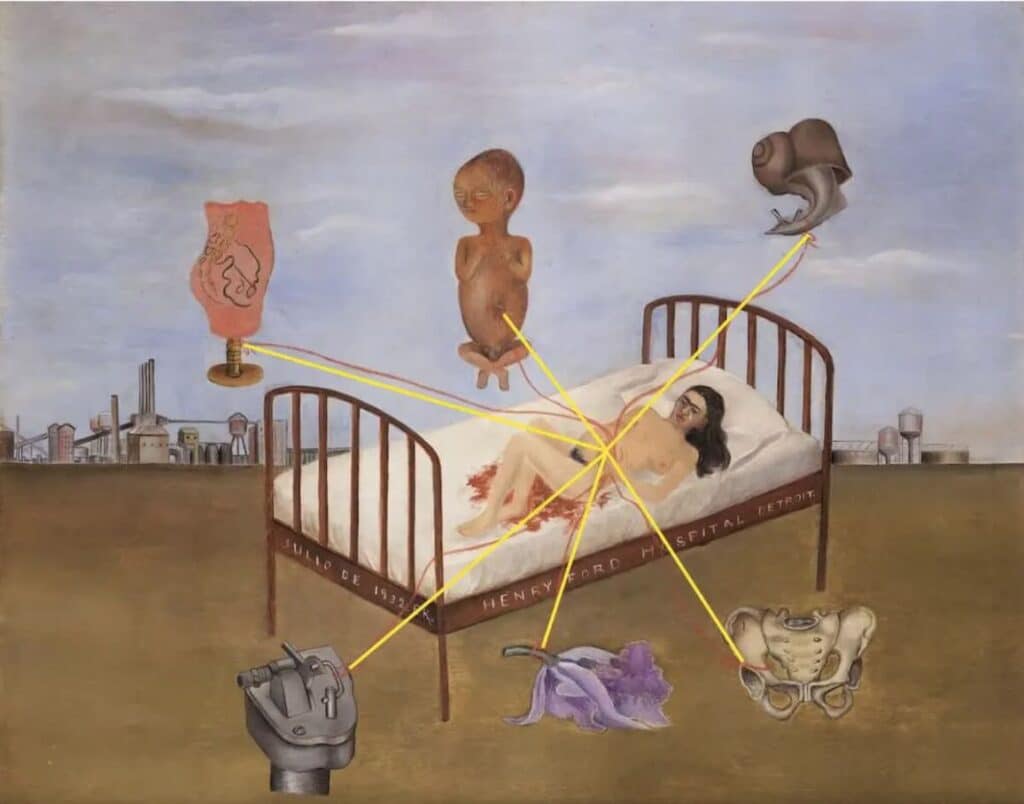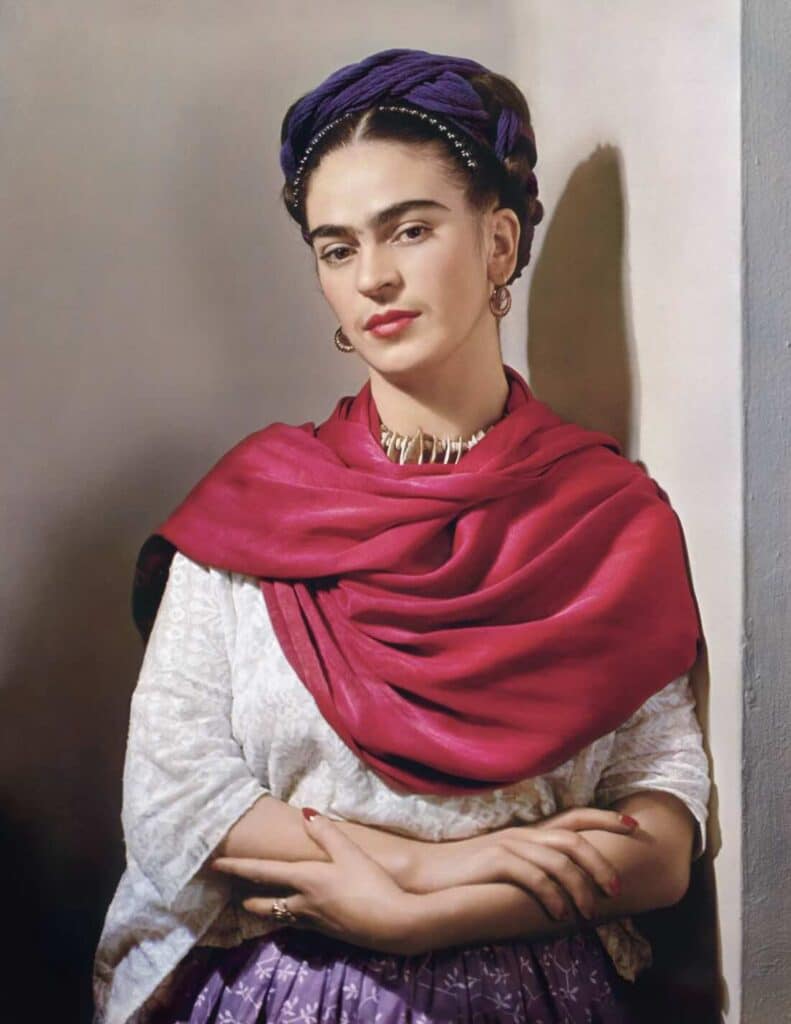Frida Kahlo, the Mexican artist known for her vividly emotional self-portraits and unique artistic style, is more than just a celebrated painter.
Frida Kahlo has become a feminist icon, a symbol of resilience, self-expression, and defiance against societal norms. Through her art, personal life, and unapologetic individuality, Kahlo challenged traditional gender roles, embraced her identity, and gave voice to women navigating pain, oppression, and self-discovery.
Table of Contents
- Frida Kahlo: A Brief Biography
- Frida Kahlo’s Art: A Medium for Feminist Expression
- Frida Kahlo and Feminism
- Frida Kahlo’s Legacy
- Why Is Frida Kahlo Considered a Feminist Icon?
- Frida Kahlo’s Enduring Relevance
- Related Questions
Read on as we’ll explore Frida Kahlo’s life, her artistic achievements, and the reasons why she remains a powerful feminist symbol. We’ll delve into her struggles, her triumphs, and her enduring legacy, which continues to inspire women worldwide.
Frida Kahlo: A Brief Biography

Early Life
Frida Kahlo was born on July 6, 1907, in Coyoacán, Mexico City. Her life was marked by physical and emotional pain from a young age. At the age of six, she contracted polio, which left her with a limp. Later, at 18, she suffered a devastating bus accident that shattered her spine, pelvis, and legs, leaving her in chronic pain for the rest of her life.
Despite these challenges, Kahlo’s determination and creativity never wavered. While recovering from the accident, she began painting—a passion that would lead her to become one of the most iconic artists of the 20th century.
Marriage to Diego Rivera
Frida married fellow artist Diego Rivera in 1929. Their tumultuous relationship, marked by infidelity and emotional upheaval, became a central theme in her art. While Rivera was a celebrated muralist, Kahlo’s work stood out for its deeply personal and introspective nature.
Political and Cultural Identity
Kahlo was deeply connected to her Mexican heritage and political ideals. She embraced indigenous culture, often wearing traditional Tehuana dresses and incorporating Mexican folklore into her art. Her political beliefs aligned with socialism and communism, and she used her art to explore themes of identity, class, and colonialism.
Frida Kahlo’s Art: A Medium for Feminist Expression
Self-Portraits and Identity
Frida Kahlo’s art is renowned for its self-portraits, which make up a significant portion of her work. In these paintings, Kahlo explored themes of pain, identity, and resilience, presenting herself as both vulnerable and powerful.

Her self-portraits often depict her physical suffering, such as in The Broken Column (1944), where a crumbling column represents her fractured spine. However, she also portrayed herself adorned with symbols of strength, such as thorns, animals, and indigenous motifs.
By painting herself unapologetically, Kahlo defied societal expectations of women and embraced her individuality. Her art became a form of self-expression that celebrated her imperfections and struggles, challenging the notion that women should conform to ideals of beauty or passivity.
Exploration of Gender and Sexuality
Kahlo’s art frequently challenged traditional gender roles and explored themes of sexuality and intimacy. In works like Self-Portrait with Cropped Hair (1940), she depicted herself with short hair and masculine clothing, defying conventional notions of femininity.

Her bisexuality and open exploration of her relationships with both men and women further positioned her as a feminist icon. Kahlo refused to hide her desires or conform to societal expectations, embracing her identity with courage and authenticity.
Pain as Power
Kahlo’s chronic physical pain and emotional struggles were central to her art, but she transformed these experiences into powerful expressions of resilience. Her paintings, such as Henry Ford Hospital (1932), which depicts her miscarriage, confront themes of female suffering and reproductive health—topics that were rarely addressed in art at the time.

By portraying her pain so openly, Kahlo gave voice to the struggles of women and demonstrated the strength that can arise from vulnerability.
Frida Kahlo and Feminism
Defying Traditional Gender Roles
Frida Kahlo lived during a time when women’s roles were confined mainly to domesticity and subservience. Yet, Kahlo defied these expectations in every aspect of her life. She pursued a career as an artist, openly expressed her political views, and embraced her individuality.
Her marriage to Diego Rivera was unconventional; while they shared a deep bond, Kahlo refused to be overshadowed by Rivera’s fame. She asserted her independence and maintained her unique artistic voice, proving that women could be equal partners in both love and creativity.
Embracing Imperfection
Kahlo’s art celebrated imperfection and authenticity. Her self-portraits often depicted her unibrow, mustache, and physical scars—features that society might deem unattractive. By embracing these aspects of herself, Kahlo challenged beauty standards and encouraged women to embrace their individuality.
Her refusal to conform to societal expectations of femininity made her a powerful feminist symbol, inspiring women to reject oppressive ideals and celebrate their uniqueness.
Intersectionality in Feminism
Kahlo’s art and life also highlight the intersectionality of feminism. As a Mexican woman, she embraced her cultural heritage and addressed issues of colonialism, class, and identity. Her paintings often incorporate indigenous symbols and explore the complexities of Mexican identity, demonstrating that feminism must consider the diverse experiences of women across cultures.
Frida Kahlo’s Legacy
A Symbol of Resilience
Frida Kahlo’s life was marked by adversity, yet she transformed her pain into art that resonates with people worldwide. Her resilience in the face of physical and emotional challenges has made her a symbol of strength and perseverance.
Inspiration for Women Artists
Kahlo paved the way for women in art, demonstrating that female artists could create works that were deeply personal, political, and transformative. Her unapologetic self-expression inspires women to use their voices and creativity to challenge societal norms.
Cultural Impact
Frida Kahlo’s influence extends beyond the art world. Her image, often adorned with flowers and traditional Mexican attire, has become a global symbol of feminism, individuality, and cultural pride. Her story is celebrated in books, films, and exhibitions, ensuring that her legacy continues to inspire new generations.

Why Is Frida Kahlo Considered a Feminist Icon?
1. Her Art Celebrates Women’s Experiences
Kahlo’s paintings explore themes of pain, identity, and resilience, giving voice to the struggles and triumphs of women.
2. She Defied Gender Norms
Through her art and personal life, Kahlo challenged traditional notions of femininity, embracing her individuality and rejecting societal expectations.
3. She Embraced Intersectionality
Kahlo’s work highlights the intersection of feminism with issues of class, colonialism, and cultural identity, demonstrating the importance of diverse perspectives in the feminist movement.
4. She Transformed Pain into Power
Kahlo’s ability to turn her suffering into art is a testament to her strength and resilience, inspiring women to find power in vulnerability.
5. She Celebrated Authenticity
Kahlo’s refusal to conform to beauty standards and societal norms encourages women to embrace their true selves.
Frida Kahlo’s Enduring Relevance
Frida Kahlo’s legacy remains as relevant today as it was during her lifetime. Her art speaks to universal themes of identity, pain, and resilience, resonating with audiences across cultures and generations.
In a world where women continue to face challenges and oppression, Kahlo’s story serves as a reminder of the power of self-expression and the importance of defying societal norms. Her life and art inspire women to embrace their individuality, celebrate their heritage, and turn their struggles into sources of strength.
Frida Kahlo’s status as a feminist icon is rooted in her ability to challenge conventions, embrace her identity, and transform pain into art. Through her self-portraits, her exploration of gender and sexuality, and her commitment to cultural and political issues, Kahlo redefined what it means to be a woman, an artist, and a revolutionary.
Her legacy continues to inspire women worldwide, demonstrating that authenticity, resilience, and self-expression are powerful tools for change. Frida Kahlo’s life and art remind us that feminism is not just about breaking barriers—it’s about embracing the complexities of identity, celebrating individuality, and finding strength in vulnerability.
In Frida Kahlo, we see the embodiment of a feminist icon: a woman who lived unapologetically, created fearlessly, and left behind a legacy that continues to empower and uplift.
Anita Louise Art is dedicated to art education, great artists, and inspiring others to find and create their art. We love art that uplifts and inspires. #ArtToMakeYouSmile! #ArtToMakeYouHappy!
If you want to see any of my art, you can find out more by clicking here. If you are interested in what inspires me and my paintings, you can discover more by clicking here.
We have a free newsletter and would love you to be part of our community; you can subscribe to the newsletter by clicking here. If you have any questions, I would be happy to talk to you anytime. You can reach me, Anita, by clicking here.
Subscribe to our Anita Louise Art YouTube Channel with great videos and information by clicking here.
Join us for our podcast “5 Minutes With Art.” Spend just 5 minutes a week with us to discover and learn about great art and artists. You can find out more about our podcast by clicking here.
Related Questions
Is Oil Painting Hard to Learn?
I know when I first thought about starting to oil paint, I was pretty overwhelmed. I felt like maybe really learning to oil paint was just too hard and I could not do it.
Learning to oil paint is actually no more difficult than learning to paint in any other medium. But to master oil painting, like any other art medium will take time and effort. But don’t let the time and effort it takes, stop you from learning to oil paint, as I believe anyone can learn to oil paint.
By clicking here, you can learn more by reading Is Oil Painting Hard to Learn?
Should an Artist Write a Blog? Your Top 7 Questions Answered
Writing a blog is not easy. It requires time and commitment. It also means that you need actually to write while also having something relevant to say. So many artists ask themselves if they should really spend the time to write a blog? I know I also asked myself that very same question.
A blog has become an essential part of most websites. This is because Google and other search engines look at the content when deciding how relevant a website is for their search data. Writing a blog will help an artist’s website, especially if your blog adds relevant content to the internet.
By clicking here, you can learn more by reading Should an Artist Write a Blog? Your Top 7 Questions Answered.
Why Was Impressionism Art At First Rejected?
I recently watched a movie about Vincent Van Gogh called At Eternity’s Gate, a beautiful movie about the life of Vincent Van Gogh. When I watched the movie, I thought, “Why were so many impressionist artists so widely rejected during their lifetime?”
During the emergence of impressionism art, fine art oil painting was an essential addition to the interior design of a home, especially for the affluent and the increasing arrival of the middle classes. For these art patrons, only some art styles were considered acceptable for them to use for the interior design of their home, and impressionism art did not fit into any of these culturally acceptable fine art categories.
By clicking here, you can learn more by reading Why Was Impressionism Art At First Rejected?

